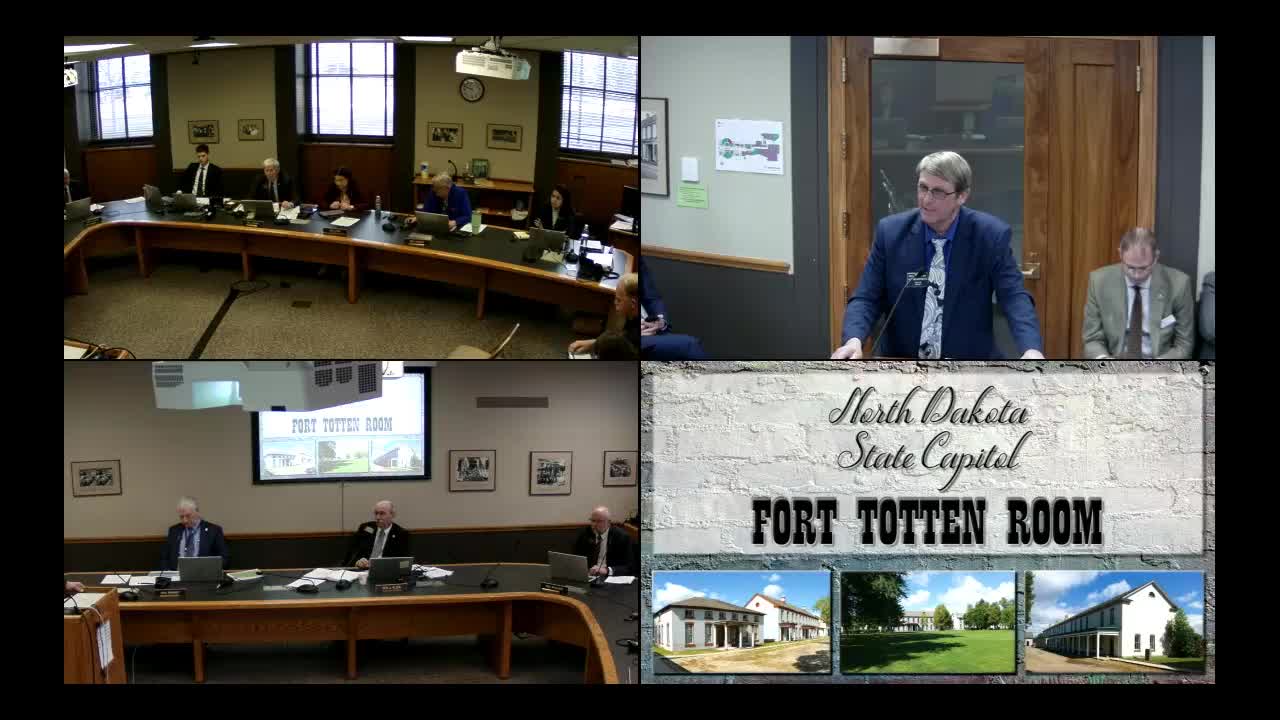Senator Hogan addresses energy concerns at power transmission hearing
March 20, 2025 | Transportation, Senate, Legislative, North Dakota
This article was created by AI summarizing key points discussed. AI makes mistakes, so for full details and context, please refer to the video of the full meeting. Please report any errors so we can fix them. Report an error »

In a recent meeting of the North Dakota Senate Transportation Committee, discussions centered around the pressing issue of energy availability and infrastructure, highlighting the critical role of transmission lines in supporting both agricultural and urban needs. As the committee convened, Senator Hogan raised concerns about whether the state has sufficient energy resources to meet growing demands, particularly in light of rising energy bills for residents.
The conversation quickly turned to the current capacity of the energy grid, with officials confirming that North Dakota is permitted to utilize close to 600 megawatts of energy. This capacity is bolstered by a network of transmission lines, including a significant line running from Jamestown to Ellendale, which is essential for distributing power across the region. The committee emphasized that these lines are not just conduits for energy but are vital for ensuring that farms and cities can operate efficiently, especially as agricultural operations expand with larger grain bins and dryers.
Senators noted that the interconnected nature of the grid allows for shared power resources among various utility companies, including Otter Tail and MDU. This collaboration is crucial as the state faces increased industrial loads and urban development, which place additional strain on existing infrastructure.
The urgency of the situation was underscored when a committee member posed a critical question: What would happen if the proposed energy bill does not pass? The response was clear—failure to advance the legislation could lead to significant problems in energy distribution and availability, potentially impacting both economic growth and residents' quality of life.
As the meeting concluded, it became evident that the discussions around energy infrastructure are not just technical details; they are intertwined with the future of North Dakota's economy and the well-being of its citizens. The committee's deliberations reflect a broader commitment to ensuring that the state can meet its energy needs while fostering growth and sustainability in both urban and rural areas.
The conversation quickly turned to the current capacity of the energy grid, with officials confirming that North Dakota is permitted to utilize close to 600 megawatts of energy. This capacity is bolstered by a network of transmission lines, including a significant line running from Jamestown to Ellendale, which is essential for distributing power across the region. The committee emphasized that these lines are not just conduits for energy but are vital for ensuring that farms and cities can operate efficiently, especially as agricultural operations expand with larger grain bins and dryers.
Senators noted that the interconnected nature of the grid allows for shared power resources among various utility companies, including Otter Tail and MDU. This collaboration is crucial as the state faces increased industrial loads and urban development, which place additional strain on existing infrastructure.
The urgency of the situation was underscored when a committee member posed a critical question: What would happen if the proposed energy bill does not pass? The response was clear—failure to advance the legislation could lead to significant problems in energy distribution and availability, potentially impacting both economic growth and residents' quality of life.
As the meeting concluded, it became evident that the discussions around energy infrastructure are not just technical details; they are intertwined with the future of North Dakota's economy and the well-being of its citizens. The committee's deliberations reflect a broader commitment to ensuring that the state can meet its energy needs while fostering growth and sustainability in both urban and rural areas.
View full meeting
This article is based on a recent meeting—watch the full video and explore the complete transcript for deeper insights into the discussion.
View full meeting
